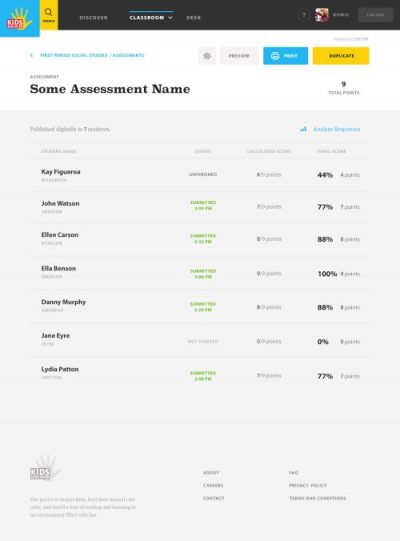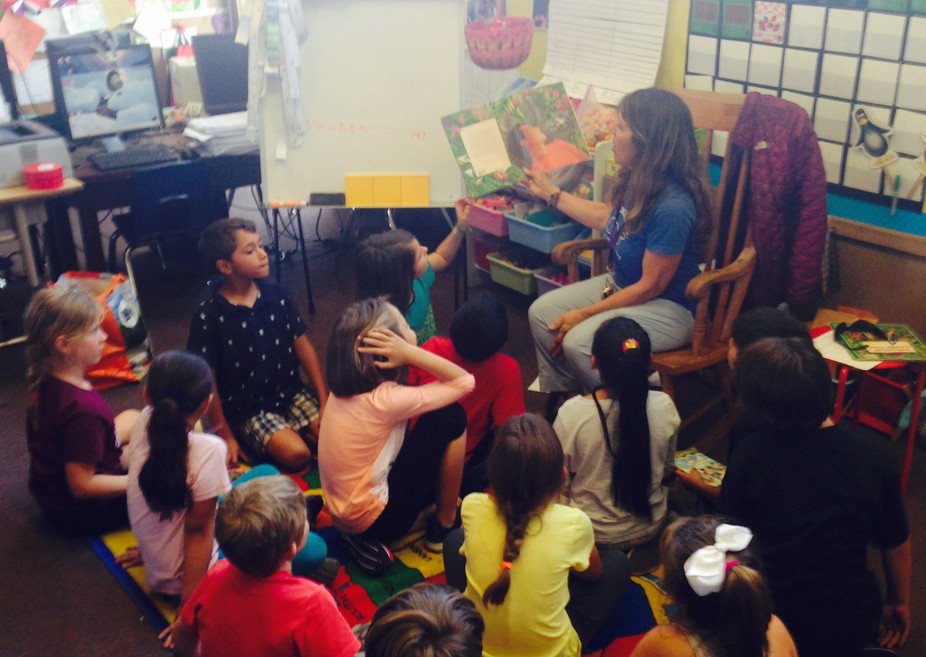Modern technology offers a plethora of cognitive tools for implementation in your classroom. You’re likely familiar with pedagogical tools and teaching resources, but you may also be wondering what exactly a “cognitive tool” is. Cognitive tools are tools that, when used outside of the classroom, play a role in productivity. They include word-processing programs, spreadsheets, and e-mail programs. Applied to the classroom, these become cognitive tools, because they improve the learning process, enhancing thinking and understanding. Let’s look at some examples: Spreadsheets Spreadsheets are screens that are divided into rows and columns, and are supplied in programs that have mathematical …
Three Handy Rubrics for Assessment Creation
When it comes to creating classroom assessments, educators have a lot of leeway as to form, content, and length. Sometimes, the breadth available can be a little overwhelming. If you’re stalling when it comes time to draw up evaluations for your students – don’t fear! We’ve got a set of handy guides to help you get your assessment-brain inspired! Rubric 1 – Seven Forms of Assessment: 1. Forced Choice Multiple choice, matching, true/false, fill-in-the-blank Can be scored objectively Most common form of assessment Choose from among alternatives given 2. Essay Good for assessing thinking, reasoning, and expression skills Opportunity to …
Continue reading “Three Handy Rubrics for Assessment Creation”
Ask Dr. Lynch: Teaching Students About Genocide
Question: How should the topic of ‘genocide’ be taught in schools? Answer: Before I respond, I would like to thank you for your question. Nowadays, we are seeing the topic of genocide being covered even in the elementary grades and there is no consensus on when it should be introduced or taught. However, I will give you my expert advice, which takes all of the dominant schools of thought into consideration. In my opinion, the topic of genocide should not be discussed prior to grade six, because although younger students have the ability to empathize with the victims of genocide, …
Continue reading “Ask Dr. Lynch: Teaching Students About Genocide”
The Five Major Features of Summative Assessments
Creating a classroom assessment that best quantifies your students’ learning can be tricky business. Because of their broad scope but specific content focus, summative assessments can be a powerful tool to quantify student learning. However, in order for a summative assessment to be most effective, five aspects must be in play: authenticity, reliability, volume, validity, and variety. Here’s how each fits into the summative assessment equation: 1. Authenticity A test should examine real-world applications. For example, a math test with equations alone is less effective than one with story problems or ways to associate the skill outside of the testing …
Continue reading “The Five Major Features of Summative Assessments”
The Pro’s and Cons of Teacher-Designed Tests
Classroom assessments are a big responsibility on educators’ plates. There are plenty of possible formats out there: summative, formative, essay, multiple choice – the list goes on and on. Rather than settling for a form response, many teachers design their own assessments. Whether pre-made or not, when developing classroom assessment tools, teachers should take the following criteria into account: Purpose: How will it be used? Impact: How will it impact instruction? Will it shrink the curriculum? Validity: Is it designed to measure what it was supposed to measure? Fairness: Will all the students have the same …
Continue reading “The Pro’s and Cons of Teacher-Designed Tests”
How National Board Certification Helped Me Turn Around a Failing School
Note: The following guest post comes to us courtesy of Dr. Kiela Snider, who has served as an educator in California for over 23 years and has held her current position as principal for Palm Springs Unified School District for the past 12 years. In 2000 she joined the ranks of National Board Certified Teachers (Early Childhood Generalist). She believes that children learn best when they are in a learning environment that has been shaped by best teaching practices. This was evident in 2007/2008 school year she led 100% her staff in completing either the National Board Certification or Take One! program. …
Continue reading “How National Board Certification Helped Me Turn Around a Failing School”
9 Challenges Our Students Face in School Today Part VII: Suicide
One challenge our students face today in school that is not normally discussed is the problem of child and teen suicide. Although students may experience internal struggles they can also be greatly affected by the loss of friends or peers who have committed suicide. This article discusses the importance acknowledging signs of suicide in students. Suicide is a problem few feel comfortable talking about, and even fewer understand. While suicide rates have decreased overall since the 1980s, suicide rates for youth between the ages of 15 and 24 have actually tripled. In fact, suicide is the third most common cause …
Continue reading “9 Challenges Our Students Face in School Today Part VII: Suicide”
The Call to Teach: Multicultural Education
America’s “melting pot” status is one that most citizens are proud to claim. The fact that people here often refer to themselves as one ethnicity or another, and rarely as simply an American, is proof that being from somewhere else – however far removed – is a source of familial pride. Even African Americans, who do not always have an Ellis Island story in the family tree, find collective strength in the stories of their ancestors and what it means for their lives today. This blending of cultures is both a blessing and curse of the K-12 classroom. With more …
Continue reading “The Call to Teach: Multicultural Education”
4 Tips Cash-Strapped Districts Can Use to Pay Teachers What They Deserve
It’s no secret that teachers in the United States receive little recognition and a salary below their abilities, and that their training after hire consists of professional development that rarely leads to much growth. There is also little incentive for teachers to strive to earn more because pay isn’t based on excellence, but on time on the job. This can lead to quality teachers feeling burned out, with no recourse for better pay for their efforts. But with a little creativity, this truth can be reversed—even for districts on a tight budget. Without further ado, here are some things to …
Continue reading “4 Tips Cash-Strapped Districts Can Use to Pay Teachers What They Deserve”
Inclusion vs. Mainstreaming: What You Need to Know Before Putting Your Child in a Classroom Program
If your child has a learning disability, there are ways you can be involved and ensure your child continues to receive a proper education based on their needs. Through classroom programs, a teacher may need to differentiate the assignments or the delivery of instruction, to facilitate positive learning experiences for all students. Being aware and responsive also requires the discretion of teachers; disabilities and special education status are private information. Students with mild disabilities are usually part of a general education classroom, and some may spend short periods of time each day in a resource room receiving specialized education. Inclusion …









